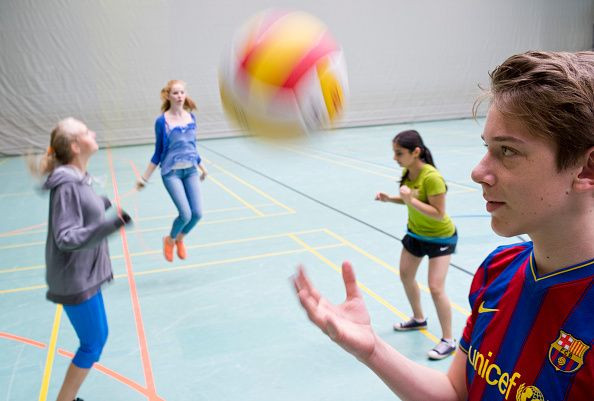Physical Fitness Gender Gap: Parents, Gym Classes Encourage Exercise With Boys More Than Girls

It may come as no surprise that boys are more physically active than girls, but according to a new body of research published in the journal PLOS ONE, the gender disparities may have been caused by school and family influences. Researchers from the University of Canberra in Australia examined factors that could be potentially impacting the gap in physical activity levels between boys and girls.
For the study, researchers collected data from the Lifestyle of our Kids research conducted in Australia, which was originally designed to determine how physical activity affected the quality of life and education for a child between the ages of 8 and 12 years old. In 2005, participants’ level of physical activity, fitness level, body fat composition, and nutritional intake were initially measured when they were eight years old and then later followed up with when they turned 10 and 12 years old. They then compared that data with potential environmental factors, such as school and family, both of which are highly influential in a child’s life.
Researchers extracted data of 550 boys and girls from 29 different schools in hopes of uncovering the underlying factors that may influence their physical activity levels. They took it a step further by evaluating their hand-eye coordination, cardio fitness, parental support of physical activity, and sport club participation, and compared it to their age and education level. It turns out girls were 19 percent less active than boys, had 18 percent lower levels of cardio fitness, 44 percent lower levels of hand-eye coordination, 9 percent lower competence in physical education classes, and a higher body fat percentage on average. Girls also took nearly 2,000 fewer steps a day than boys did in comparative age groups.
In order to look behind the curtain and see if there were any environmental factors influencing the children, researchers asked parents and the educational institutes to fill out a questionnaire. They found even gym class tended to “favor” boys’ natural athleticism. For example, girls tended to have poorer hand-eye coordination and a lower fitness level than boys, yet teachers tended to focus their curriculum on class activities that were more catered toward the boys, which in turn decreased the girls’ engagement, development, and enjoyment of the class. A similar trend was apparent in the family setting, in which parents reported they supported their sons’ involvement with sports and other physical activities more than their daughters.’
"Our findings suggest that school is a stronger influence on boys' activity levels compared to girls," said the study’s lead author Rohan Telford, a researcher at the University of Canberra, who added that the gap could be closed using a “multi-pronged approach” through the types of influences from family, school, and extracurricular activities. Each factor must provide equal levels of encouragement and engagement for children among both genders.
According to another study, published in the Journal of Teaching in Physical Education, even though boys are more physically active than girls, the authors believed schools have the potential to promote physical activity for children of all genders and ages.
The Centers for Disease Control and Prevention also recommend using school as a way to promote physical activity through improved physical activity programs such as recess, classroom-based physical activity, club sports, and physical education. Regular physical activity can help build and maintain healthy bones and muscles, reduce the risk of obesity, Type 2 diabetes, cardiovascular disease, and certain types of cancers. But one of the cornerstone benefits for children would be physical activity’s ability to reduce feelings of depression and anxiety, and promote psychological well-being — problems seen more prevalently among adolescent girls.
By the time kids make it to high school, 44 percent of girls and 15 percent of boys are attempting to lose weight. What’s worse, seven in 10 girls report feeling like they’re not good enough in some facet of their life, including their looks, performance in school, and their relationships with friends and family. What does this have to do with physical activity? According to the Women’s Sports Foundation, high school girls who play sports are less likely to have an unintended pregnancy and more likely to get better grades in school and graduate compared to girls who aren’t involved in sports. Girls and women who play sports have markedly higher levels of confidence, self esteem, positive body image, and lower levels of depression.
Physical activity participation goes beyond the physical health benefits — exercise fosters a ripple effect of improved emotional and mental health throughout a person’s life regardless of their gender. By intervening and investing in physical activities for children's lives at younger ages, they have a greater chance of continuing involvement in sports.
Source: Telford RM, Telford RD, Olive LS, Cochrane T, and Davey R. Why Are Girls Less Physically Active than Boys? Findings from the LOOK Longitudinal Study. PLOS ONE. 2016.



























